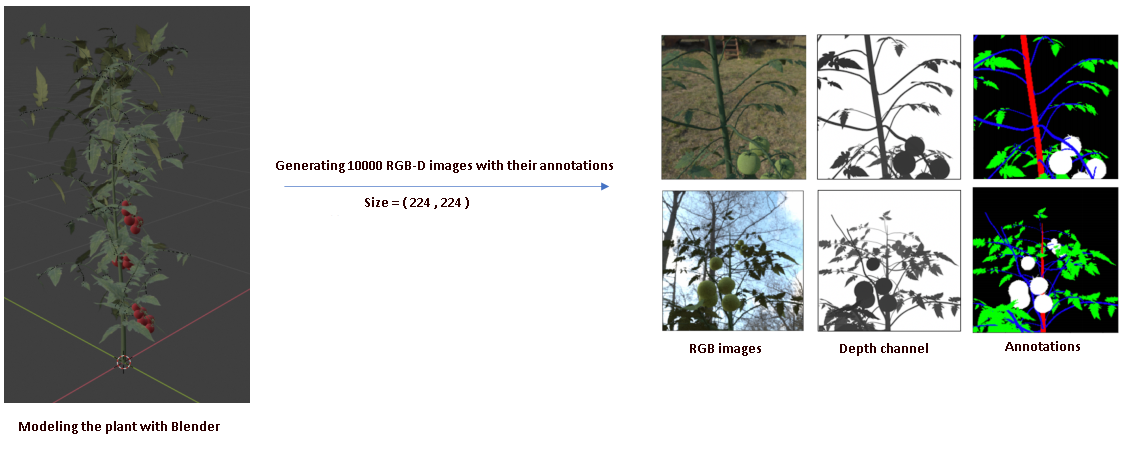Computer Vision : Semantic segmentation of RGB-D images of plant organs
My Github repository for this project: click here
This project is about semantic segmentation of 4 classes of plant organs (stem, petiole, leaf and fruit) from RGB-D images using Pyhton 3, Tensorflow 2.0 and Keras. I worked with synthetic data, randomly generated and annotated with Blender and used a SegNet architecture trained from Scratch with 10000 images.

Dataset
It’s a synthetic dataset of plants image generated with Blender as shown below :

The Dataset is now available in Kaggle.
You can check also the public notebook i’ve made for this data set here.
1.Training & Evaluation
The model was trained on 10000 images ( 8000 images for training, 1000 images for validation and 1000 for test ) of size 224x224 on 4x12Go GPU, the curves of accuracy and loss were as follows :
Training accuracy = 99%
Validation accuracy = 98%
The curves of accuracy and loss are shown below :

2.Inference
The model was tested on 1000 RGBD images and with a test accuracy = 97,8% , here is some results:

3.Architecture
Here is a screenshot of one bloc of SegNet visualised in Tensorboard :

Conclusion
This project is about semantic segmentation of plant organs into 4 classes + Background using synthetic RGB-D images.
References
- SegNet: A Deep Convolutional Encoder-Decoder Architecture for Image Segmentation by Vijay Badrinarayanan, Alex Kendall, Roberto Cipolla, Senior Member, IEEE

